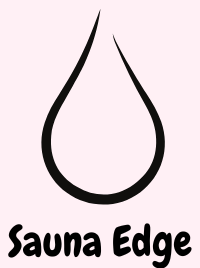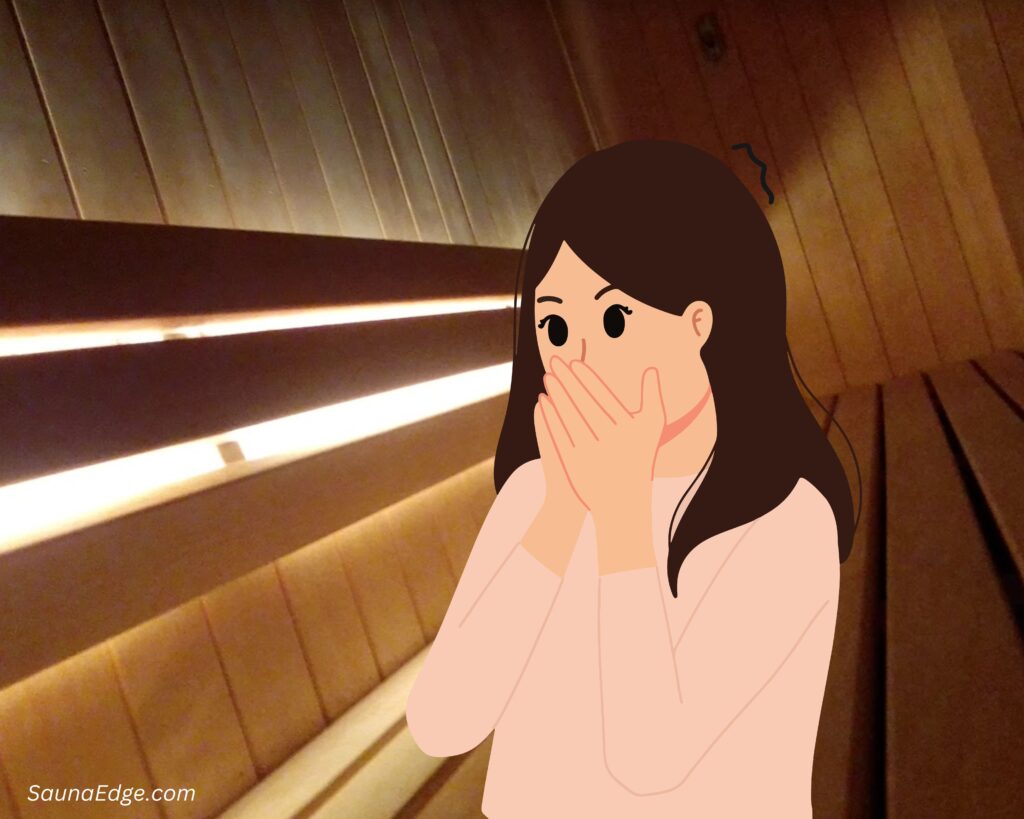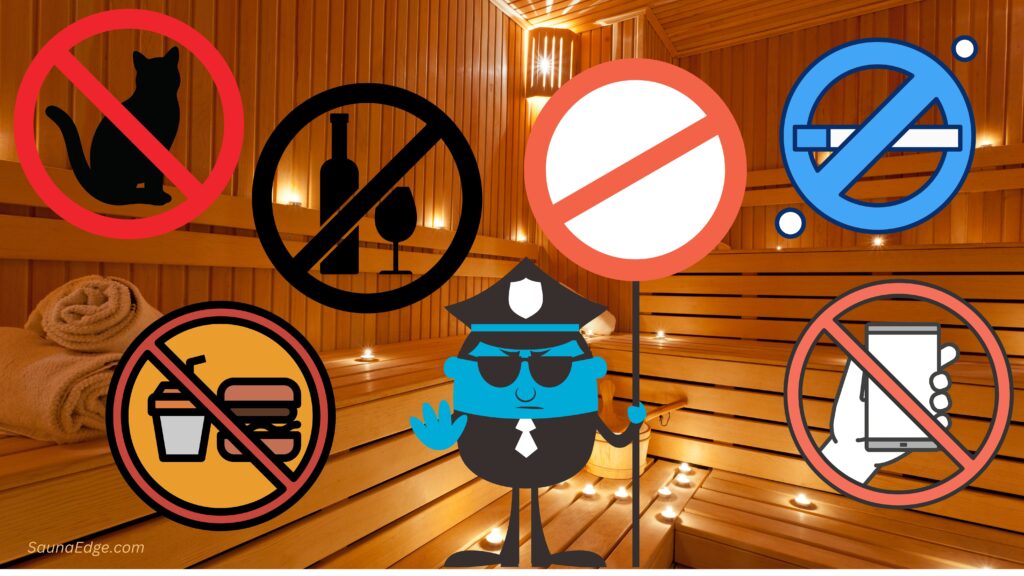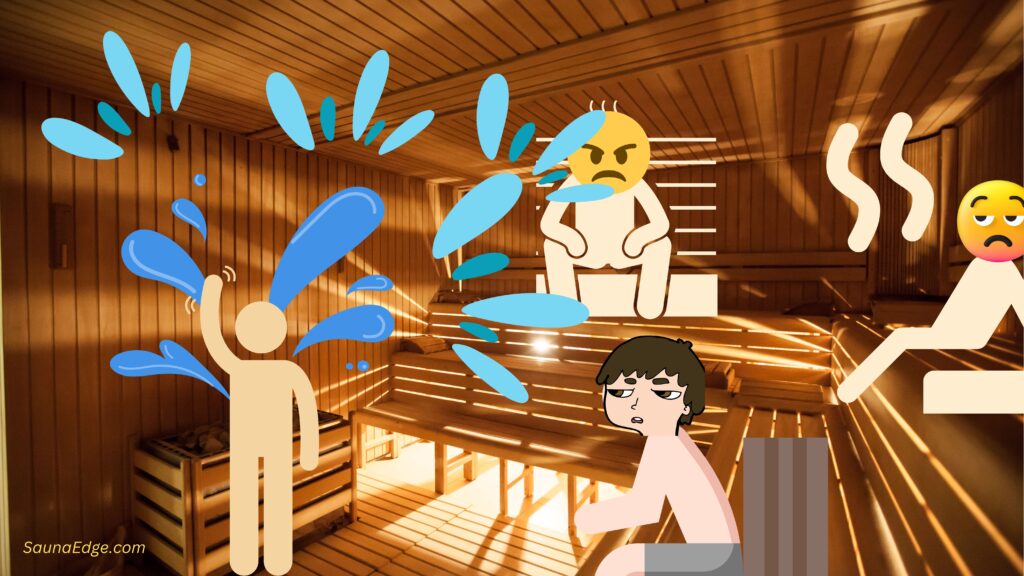Have you ever visited a traditional sauna at a public facility, only to find an irritating sign saying “Do not pour water on the stones or heater in the sauna”? This sign is not only somewhat annoying, but also confusing since the rocks and heaters of traditional saunas are in fact made to withstand water. Anyway, this is an issue that has been bugging me for a long time, so I finally did some research to try to find out why.
The reason why public saunas sometimes have a sign saying “Do not throw water on the rocks or heater in the sauna”, is typically not because the stones and heater cannot withstand water. Rather, it is most often because the lifetime of the heater can be reduced. It can also be because many inexperienced people in public saunas tend to throw too much water on the stones, making it too hot for everyone, and making the floor slippery.
In this post, I will first explain the details about how and why the stones and heaters in traditional saunas are typically built in such a way that they can withstand water. Then, I will go into the specific reasons as to why public saunas have these signs telling you not to throw water, despite of the sauna being built therefore. Thereafter, I will tell you about what happened to me those times I didn’t notice the sign, and mistakenly went ahead and threw some water on the stones. Finally, I will also give you a few tips on how to recognize these public saunas that are against water on the stones.
How stones and heater of traditional saunas are different
In traditional saunas, the stones used on the heater are typically made of a type of rock that is able to withstand the high heat and frequent exposure to water without cracking or breaking. These are typically the darker and denser kinds of stones. Examples of the kinds of stones used are granite, vulcanite, gabbro, and basalt.
These types of rock are all known for their durability and ability to retain heat, which makes them well-suited for use in saunas. As mentioned, the stones used in traditional saunas in fact have to be the kinds that have the ability to withstand both high temperatures and frequent exposure to water.
When it comes to the heater of a traditional sauna, nearly all of them can withstand water thrown at them. This includes all of the electrical heaters, which are the only kinds I have ever seen in public facilities. (In fact, 90% of all traditional sauna heaters are today electrical, so the chances of a private sauna being of this type is also very high.)
Moreover, commercial heaters should not be wired in way that they cannot withstand water. In fact, sauna heaters are instead typically constructed in such a way so that they should produce a nice steam when water is added to their stones.
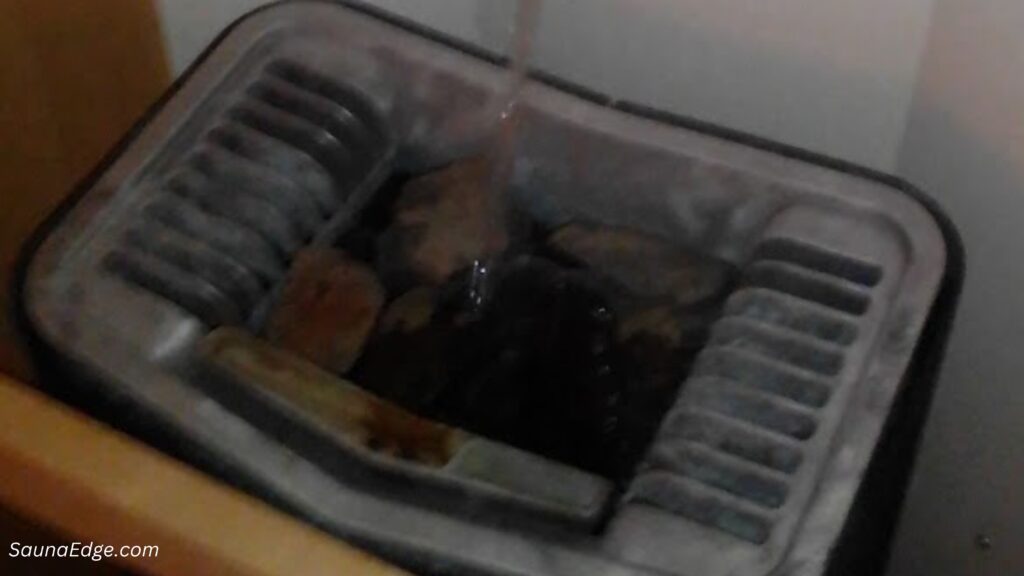
Why some public saunas have a no-water-on-stones policy
So, despite of it being perfectly possible, and even something that enhances the sauna experience, some public saunas still have their little signs saying “Don’t throw water on the stones or the heater of the sauna”. Why?
It turns out there can be many reasons for this sign. These reasons can be categorized into four main groups:
- Maintenance
- Safety
- Social respect
- Habit
I’ll explain each of these below.
1. Maintenance
So, it turns out one of the more common reasons behind the sign “Don’t throw water on the rocks and heater of the sauna” is simply because the people owning the facility don’t want to have to change the heater more often than needed. If much water is thrown on the heater, its all-time lifespan is reduced. So, with all the people passing in and out of a public sauna, this means they’ll have to change the heater relatively often.
2. Safety
Safety, or perceived safety, turned out to be another main reason for the don’t-throw-water-sign in public sauna facilities. As it turns out, many inexperienced people in public saunas tend to throw too much water on the stones. This can produce an unexpected heat-shock to other people sitting in the sauna, especially those at the higher bench. This can even be dangerous to the skin if it’s very excessive. More commonly however, it can simply make it too hot for everyone else around.
It also turned out there is another potential safety-issue that many public saunas don’t want to deal with. This has to do with the fact that some people that throw water excessively on the stones, also manage to pour a bunch of water around the heater. This leads to a wet floor, that unsuspecting visitors can easily slip on.
3. Social respect
It also turned out that there have evidently been instances where a person just walks into the sauna and throws a bunch of water on the heater without firstly asking the other people sitting there. Not everyone likes steamy saunas, so this would of course create a problem at a public facility. I have personally never witnessed anyone doing this. My experience it that people are typically very respectful and polite. (The gym saunas are also often completely empty in my experience.)
4. Habit
It turns out that some people that ask about the don’t-throw-water-sign at the public sauna, receive the answer that the sign is there because it’s always been there! Since the current owner or employee does not know why the sign was put up in the first place, they don’t want to risk taking it down either.
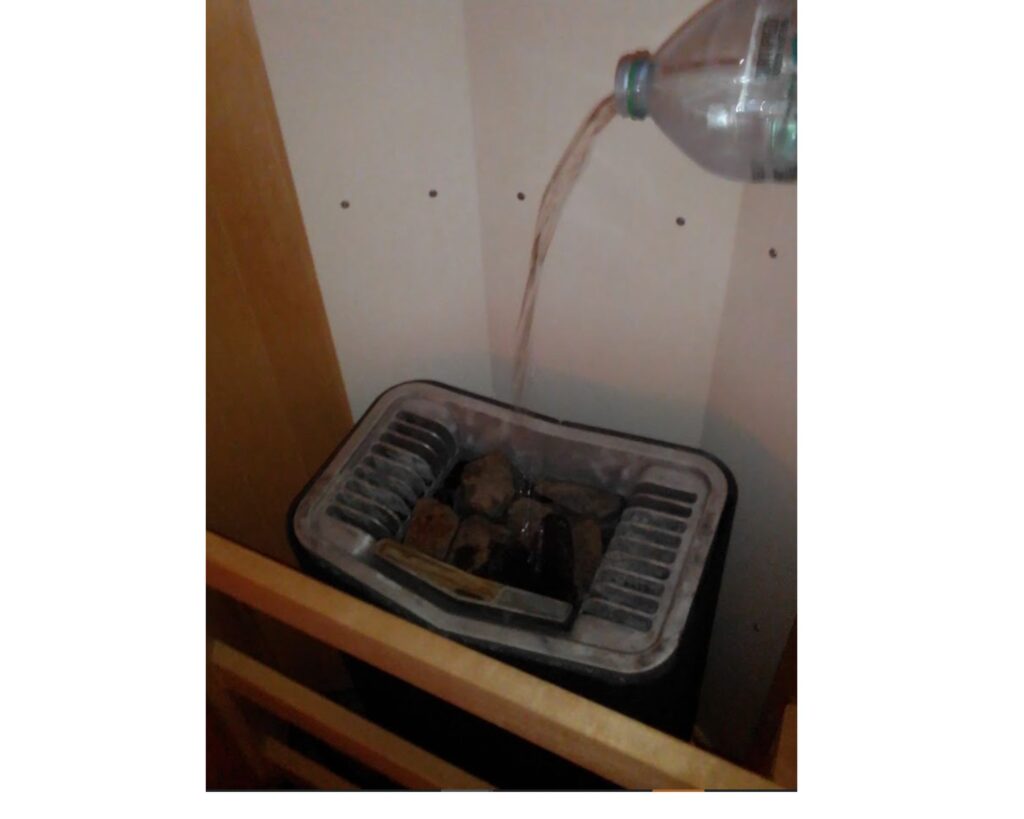
My experience of mistakenly ignoring sauna’s no-water-sign
So, what happens if you mistakenly ignore the no-water sign in a public sauna, and go ahead and throw some water anyway? I can personally answer this question based on my own experience, because this has happened to me a couple of times.
Many public saunas make sure to not put anything non-natural, including plastic signs, inside of the sauna. This is a very good practice, which overall contributes to a better sauna-experience. However, this also means that the no-water-sign can be rather hidden, and hard to detect.
The sign is often placed on the wall outside of the sauna, and I have often not even noticed it. (And, I assume I can’t be only one.) Also, if seeing some sign, I have occasionally just assumed that it says something along the lines of taking off one’s flip-flops before entering the sauna.
I have therefore mistakenly thrown some water on the stones in a few of these public saunas with (well-hidden) no water-signs. That has however only been when I’ve been alone in the sauna. What happened? Well, nothing in particular. The sauna produced a nice steam, and nothing was damaged as far as I could tell.
However, these instances were by mistake.
Common features of public saunas with no-water-signs
With time, I’ve come to notice that these public saunas with a don’t-throw-water-sign actually often have a few things in common:
Firstly, a water bucket and ladle is typically missing in the sauna. This in itself is a strong sign that the owners may not like anyone throwing water on the stones. However, it could of course also be due to that they didn’t think of providing these.
Secondly, according to my experience, these public saunas are more often than not located in counties that don’t have a very developed sauna tradition.
Thirdly, they are often located at bigger swimming-pools, or gym facilities, that are not primarily focused on spa-services.
So, if you don’t want to get into a situation where you accidentally throw water on the stones in a sauna that does not allow it, you can think of these features. The likelihood is, in my opinion, definitely higher that you’re at a public sauna with a no-water-policy if any of these features are present!
Final Words
So, it turned out there are actually several (more or less dubious) reasons behind the sign in some public saunas saying “Don’t throw water on the stones and heater”. I personally think the most important of these reasons is respect for the owner of the facility, and for other people in the sauna.
What do you think? Do you find these no-water-signs a bit irritating too, and have you ever run into an unpleasant situation where you mistakenly broke the rule? I would love to hear your thoughts in the comments!
Anna
Author: Anna Svensson
Anna is a Scandinavian who grew up with saunas. She has had a life-long love for, and interest in, saunas. In this blog, she shares her best hacks and things she has learned about saunas over the years. You can read more about Anna in the “About” page.
